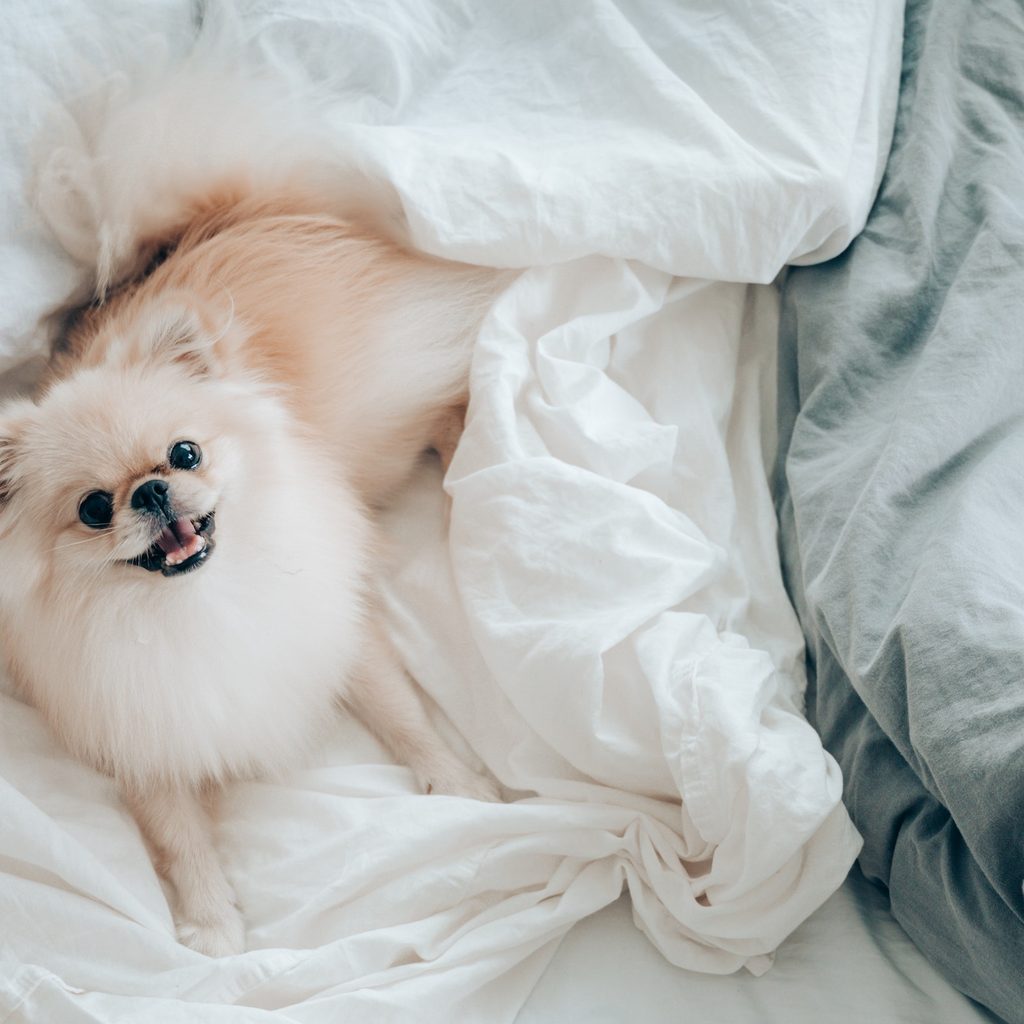Although you probably remember your own puberty experience, dog puberty sounds like an entirely different thing. When a dog grows up, though, he goes through many of the same changes and hormonal fluctuations humans do. Each dog reacts to these transitions a little differently, but there are certainly a few things to know that will make the process so much easier. It never hurts to be prepared, right?
When do dogs go through puberty?
When looking into puberty for dogs, it’s important to remember how individual an experience it can be. Even though there are general guidelines as to when certain breeds begin puberty, it’s not unusual for dogs to fall slightly early or behind as well. And that’s OK!
Generally speaking, according to the Guide Dog Foundation, some dogs begin the transitional stage of puberty as early as 7 to 10 months of age, though others won’t get there until closer to 2 years old. When a dog reaches this developmental stage, hormones in their body begin to trigger sexual maturation, bringing about both physical and behavioral changes.
Dog trainer and behavioralist Carolyn Menteith describes canine puberty as a time when a dog’s “hormones are running ahead of their brains,” which can give you an idea of the kind of changes occurring. Just ask any human teenager: Puberty is a crazy time!

How to know when your dog is hitting puberty
Male dogs
When hormones first start to fluctuate, your pup will get a big boost of testosterone — even more than most adult dogs have in their bodies (via Purina). At times, testosterone can even lead to fights between otherwise friendly dogs or other kinds of territorial behavior. “Marking” territory with a small amount of urination is not uncommon.
Hormonal changes may also manifest as one of pethood’s most embarrassing behaviors: mounting. As mortifying as it may be, your male “teenager” may feel the urge to mount people, objects, or other dogs. Luckily, you can help curb this unwanted behavior.
Because a male puppy’s testicles reach physical maturity shortly after birth, the rise in testosterone marks the true beginning of puberty. Although a male dog can breed at any time once mature, they are at their most fertile from 12 to 18 months of age, on average.
Female dogs
With female dogs, puberty is a bit more complicated. Not only do you have the hormonal and behavioral aspects to worry about, but you’ll experience your pup’s first heat cycle, too. This will start between 6 and 15 months of age, according to Purina, and repeat about every seven months afterward.
These are a few telltale signs that your pup is in season, courtesy of Guide Dog Foundation (another way of saying she’s “in heat”):
- A red discharge from the vagina (this will last for just under a month and marks the time when your dog is the most fertile and willing to breed).
- Licking and cleaning of the vulva.
- Vulvar swelling.
- Frequent urination.
- Excessive coat shedding four to six weeks before heat.
You’re also likely to notice social and behavioral changes such as increased anxiety, playfulness, or possessiveness. No two dogs will react the same way to these hormonal changes, just like people.
Behavioral changes
With some pups, according to Menteith, their personality becomes amplified during puberty. Your playful puppy might grow into a furniture destroyer when their hormones are raging, while your timid dog may become suddenly more fearful. Other dogs, however, might undergo a more drastic behavioral shift as they experience life in a changing body and environment.
Interactions with other animals may be tenser, even with dogs your furry friend previously got along with. It’s nothing personal; your pup just needs to reevaluate their social environment as they “lose their puppy privilege,” according to Purina, and learn new ways to interact. Even human-dog relationships may experience some rocky moments as your buddy finds the balance between the neediness of a pup and the independence of an adult. They’ll figure it out!

Tips to help your dog through puberty
Although there are many ways to manage the signs and symptoms of puberty, nothing will reduce health and behavior risk as well as spaying and neutering. If you choose not to take that route, you can keep your pet safe by following a few precautions during puberty and beyond.
For testosterone-surging male dogs, always supervise their interactions with other animals and new people. Sudden behavioral changes can occur, and your top priority is keeping everyone safe. Both adolescent male dogs and female dogs in heat should be separated from other dogs at the first sign of unwanted behavior. Pregnancy can occur anytime while a dog is in heat, and a surge of hormones for either gender can lead to sudden aggression.
To help your female dog through heat, you may need to invest in doggie diapers or other methods of protecting your furniture. Make sure your pup can access somewhere to potty on short notice, and always let your vet know if anything unexpected comes up.
Canine puberty might seem scary, but with some knowledge under your belt, you’ll be able to handle it like a pro. It may still drive you crazy when your pup is happy one moment and destructive the next, but with some patience and TLC, you both will settle into the changes quite nicely.



